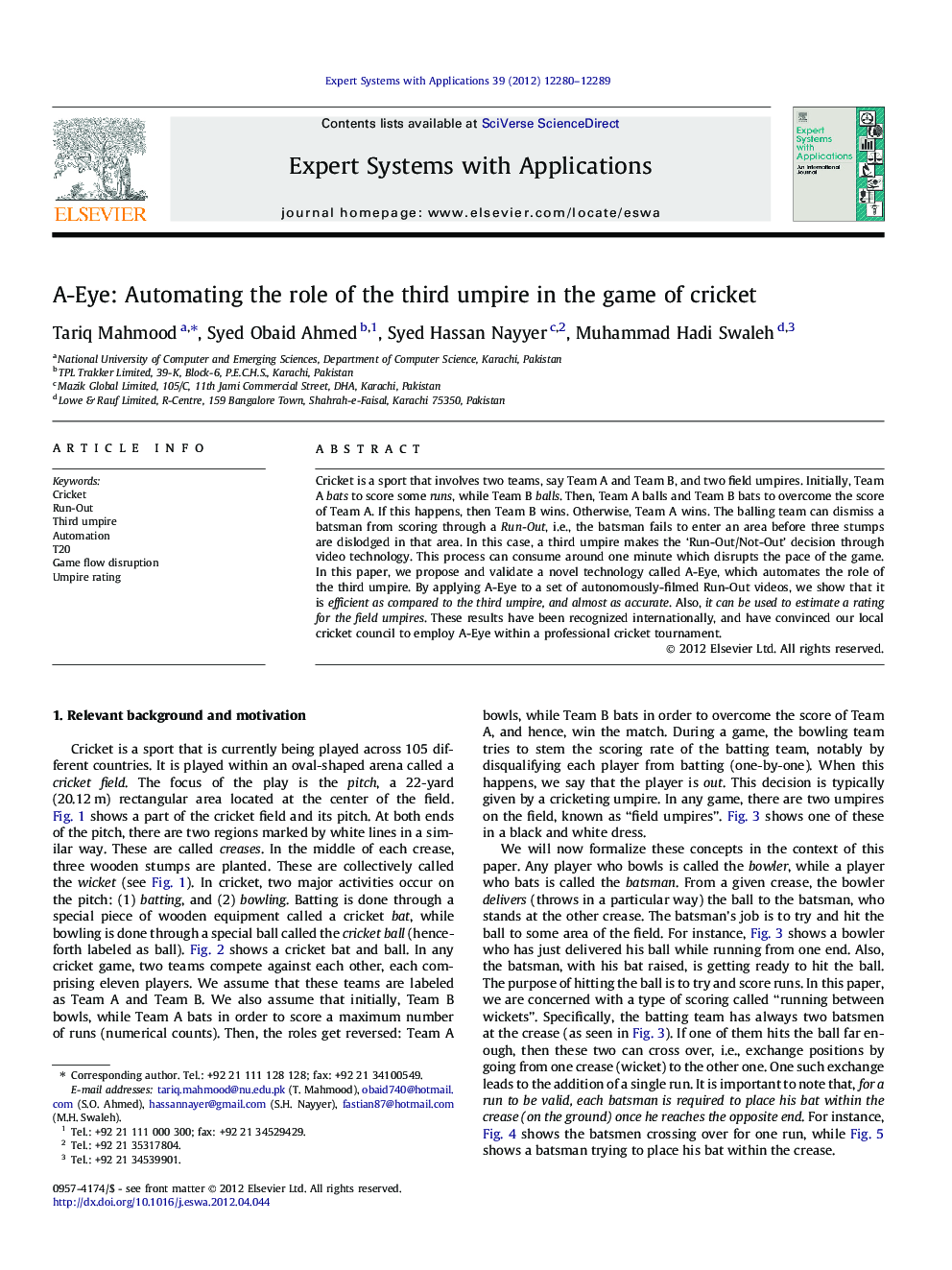| Article ID | Journal | Published Year | Pages | File Type |
|---|---|---|---|---|
| 383435 | Expert Systems with Applications | 2012 | 10 Pages |
Cricket is a sport that involves two teams, say Team A and Team B, and two field umpires. Initially, Team A bats to score some runs, while Team B balls. Then, Team A balls and Team B bats to overcome the score of Team A. If this happens, then Team B wins. Otherwise, Team A wins. The balling team can dismiss a batsman from scoring through a Run-Out, i.e., the batsman fails to enter an area before three stumps are dislodged in that area. In this case, a third umpire makes the ‘Run-Out/Not-Out’ decision through video technology. This process can consume around one minute which disrupts the pace of the game. In this paper, we propose and validate a novel technology called A-Eye, which automates the role of the third umpire. By applying A-Eye to a set of autonomously-filmed Run-Out videos, we show that it is efficient as compared to the third umpire, and almost as accurate. Also, it can be used to estimate a rating for the field umpires. These results have been recognized internationally, and have convinced our local cricket council to employ A-Eye within a professional cricket tournament.
► A novel technology called A-Eye to automate the role of the third umpire in Cricket. ► We show that A-Eye is extremely efficient as compared to the third umpire. ► We show that A-Eye is almost as accurate as the third umpire. ► A-Eye can determine a rating for the umpires on the cricket field. ► A-Eye ensures that the flow of the game is disrupted as little as possible.
